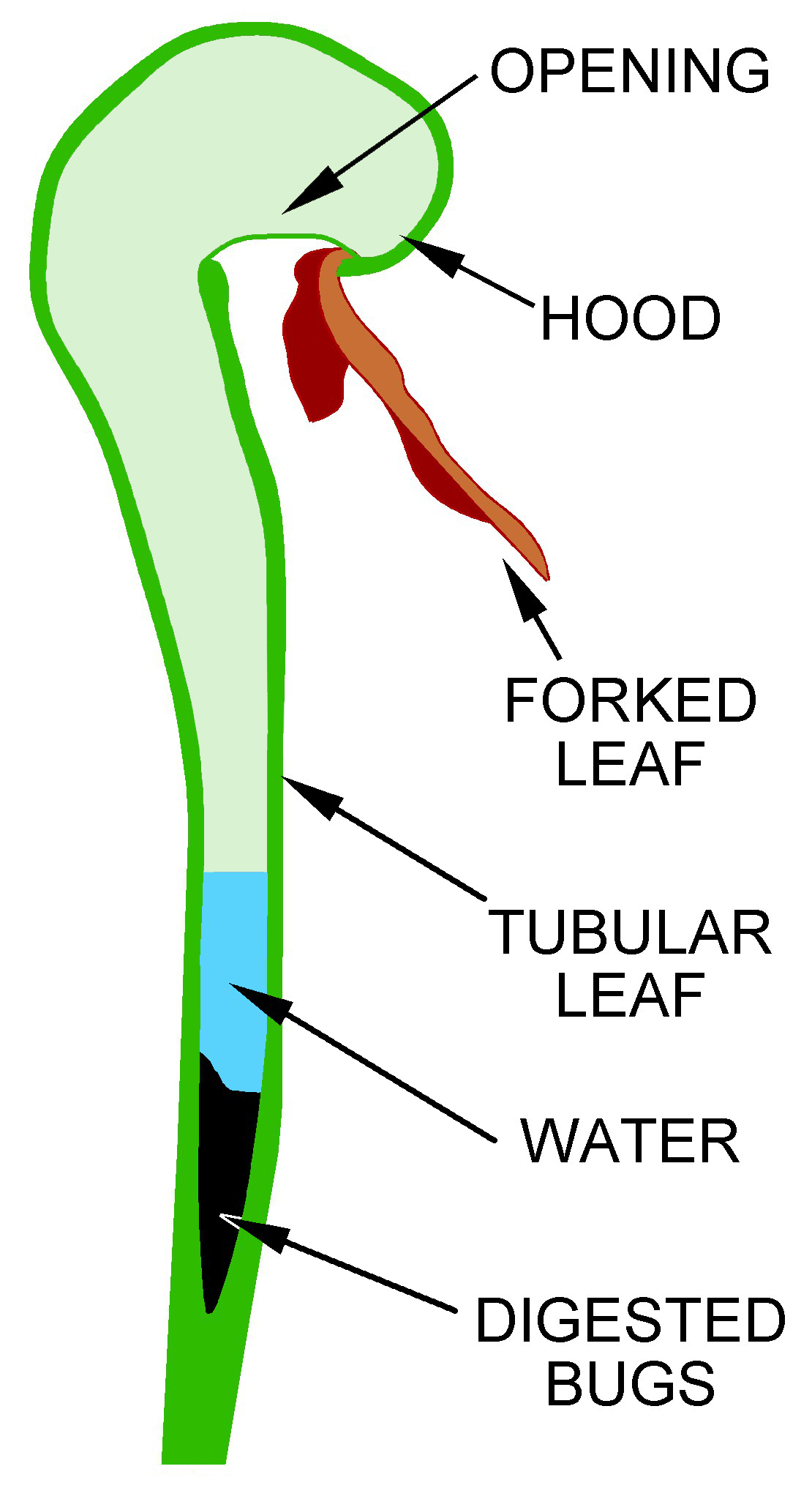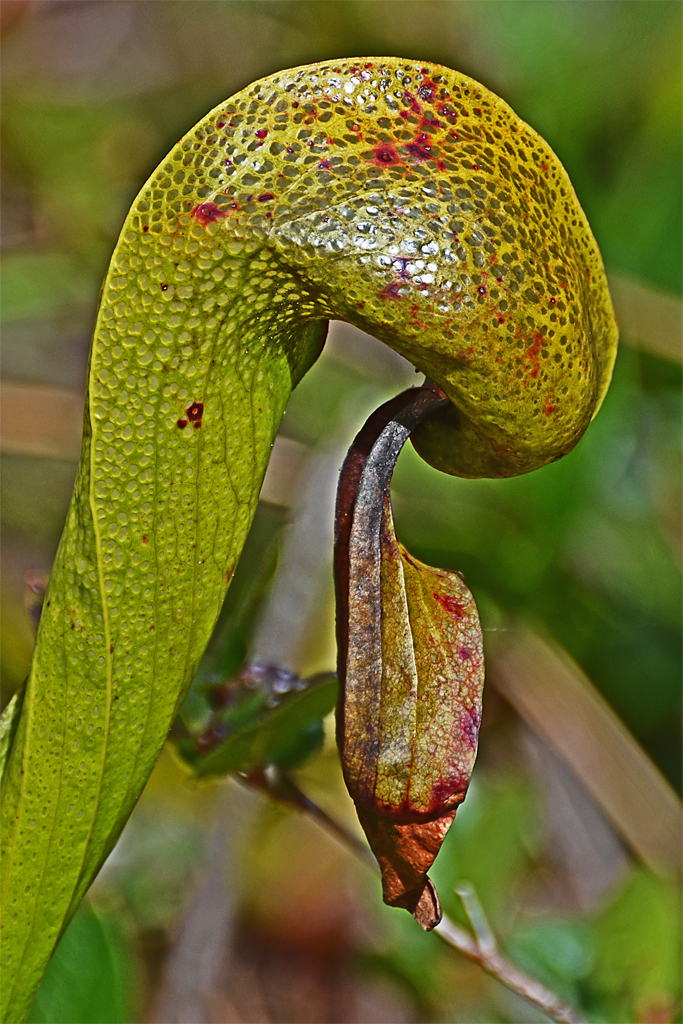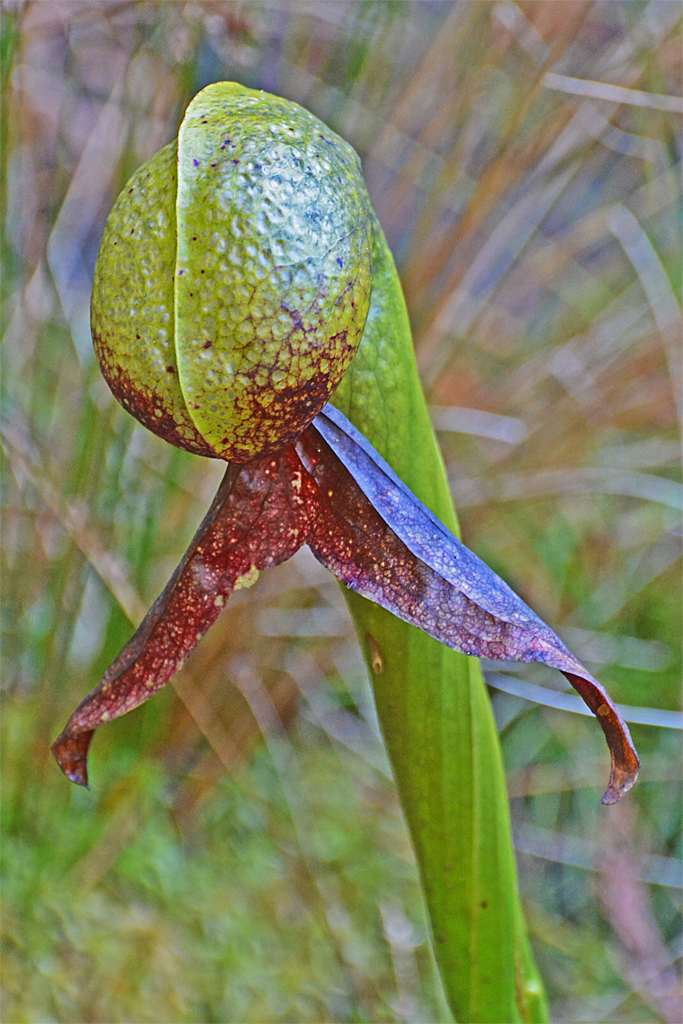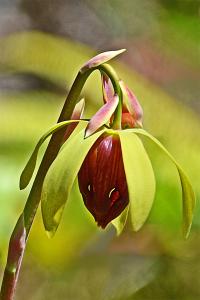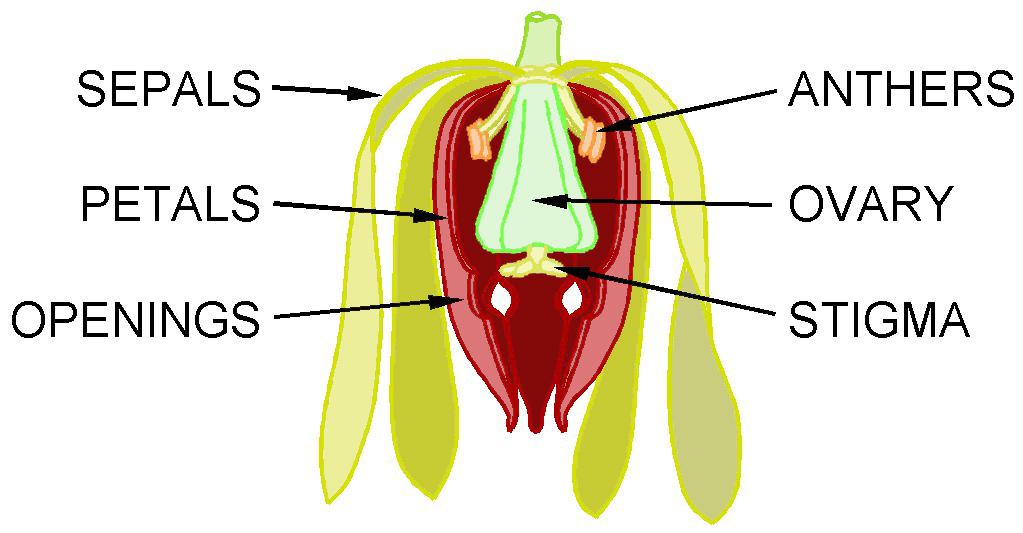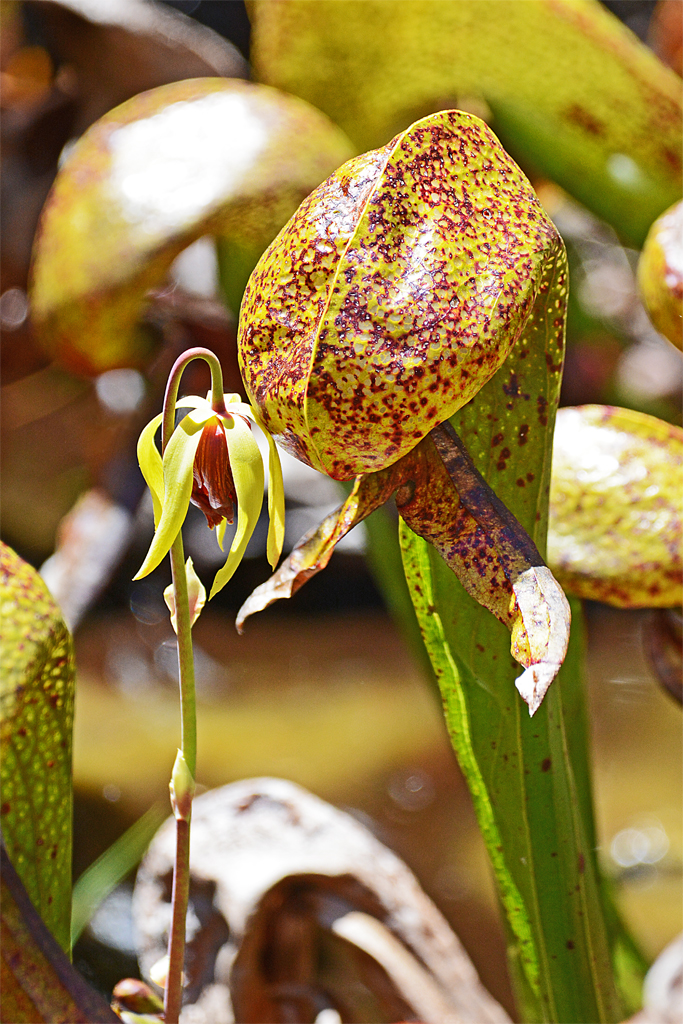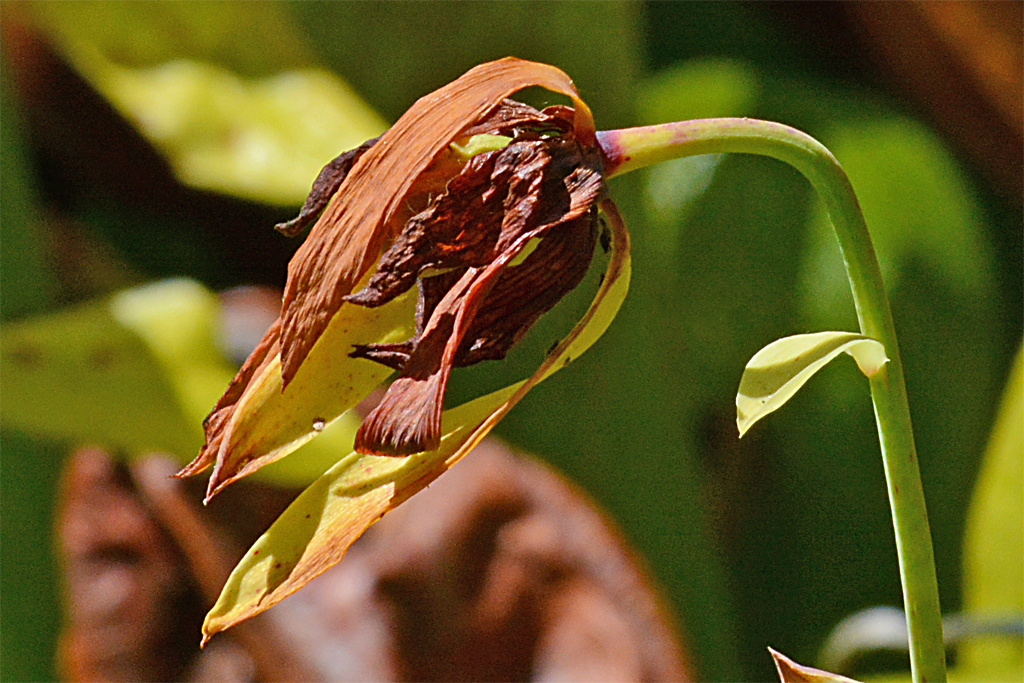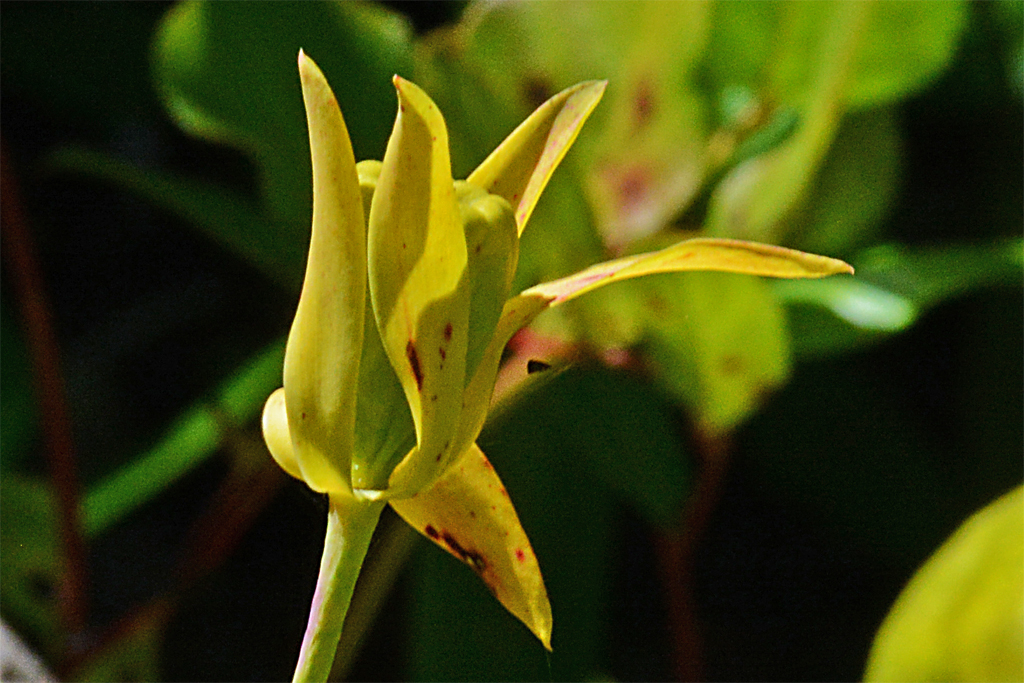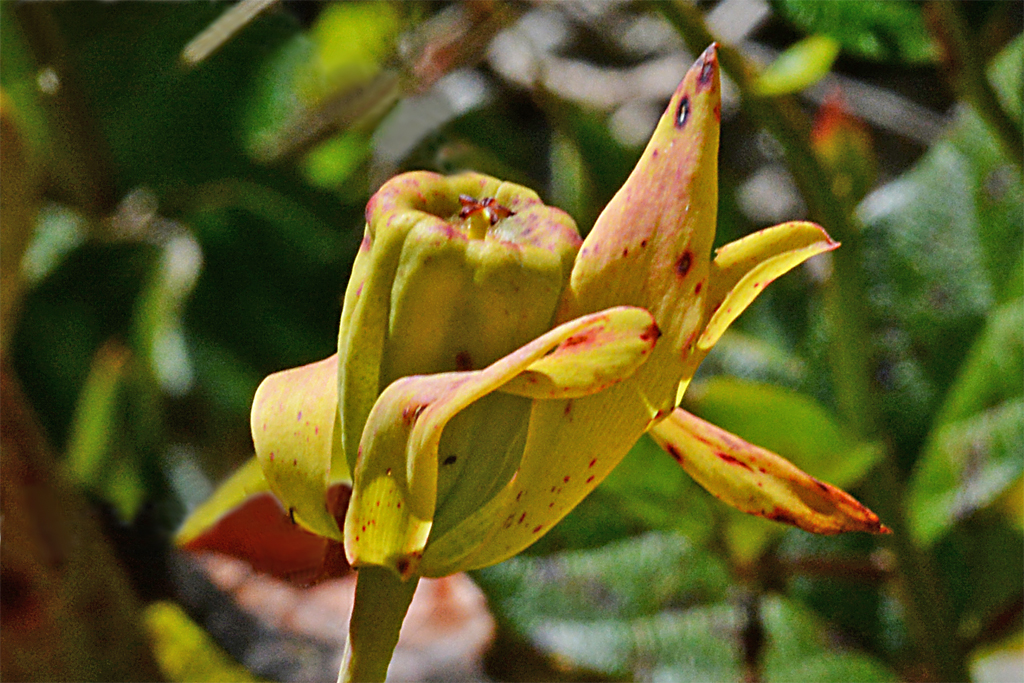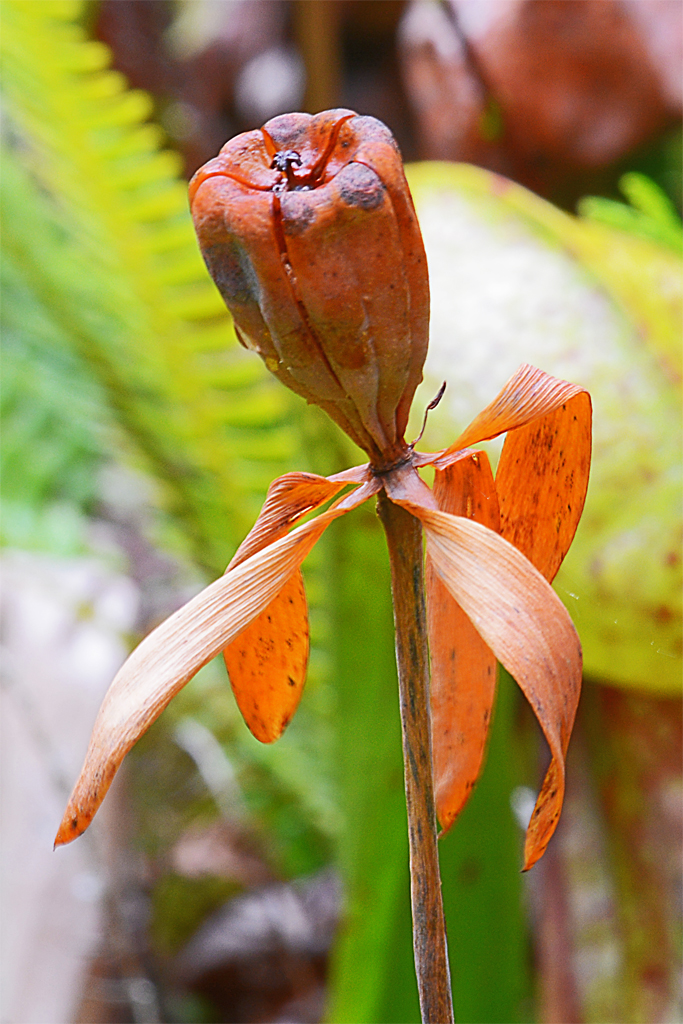
Darlingtonia Wayside: Meet the Pitcher Plant
Guest Blog and Photos by Phillip Hays
June 2021
The Oregon State Parks Darlingtonia Wayside Botanical Garden is on the Pacific Coast Highway (US 101) 4.7 miles north of Florence, Oregon. The “garden” is a natural bog with a boardwalk circling through it. There you will find thousands of the carnivorous Darlingtonia californica insect eating plants. They are called pitcher plant and cobra lily. If you haven’t seen these strange creatures it is worth a trip!
The most distinctive feature of the plant is the tubular leaf that curves over at the top to form the hood. It has an opening on the bottom of the hood to allow insects to enter. The forked leaf and interior of the hood have glands that secrete nectar. After the insect enters the opening in the hood it is attracted to light coming through thin “windows” in the top of the hood. Downward pointing hairs prevent the insect from climbing out. It eventually tires and falls into liquid secreted in the base of the tube. This contains digestive enzymes that extract nutrients. The bottom of the tube fills with digested bugs.
The plant puts up a flowering stem in spring and blooms in May and June on the coast. Five greenish-yellow sepals form the outside of the flower. The five petals are the dark reddish-brown parts in the center. Notches on the edges of adjacent petals form openings for insects to enter. Inside is a green ovary with female stigmas near the openings in the petals. Around the top of the ovary is a ring of male pollen-bearing anthers.
The flower develops through summer and produces a seed pod in the fall. The petals fall off, the seed pod turns upright, and the sepals dry.
You can see from these photos that colors vary from plant to plant and season to season.
The plant grows in a few spots in northern California and southern Oregon, at elevations from sea level to 6000 feet. It grows in nitrogen-poor bogs, and gets its nitrogen from digested bugs. However, it does thrive in non-boggy soils. It has a root system that is fairly delicate, not surviving in conditions warmer than a cool 10°C (50°F). However the leaves like sunlight and tolerate much hotter temperatures up to 25°C (77°F).
The leaves die back each year and wither into a thin dry brown leaf like dry tree leaves. Up to a dozen new leaves form at a time from the root system at the base of the older leaves.
Restoration
Research
Education
Get Involved
Contact
Main Office:
4950 SW Hout Street
Corvallis, OR 97333-9598
541-753-3099
[email protected]
Southwest Office:
1850 Old Pecos Trail, Suite I
Santa Fe, NM 87505
[email protected]
© 2024 Institute for Applied Ecology | Privacy Policy

